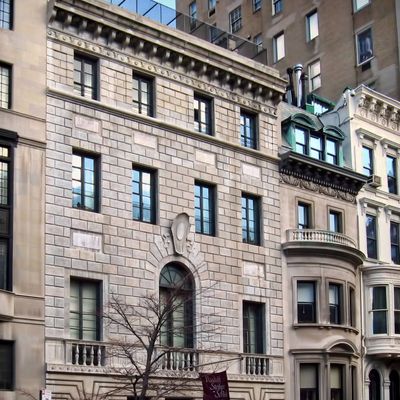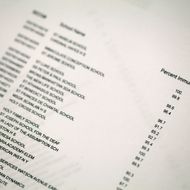
In 2011, parents at a progressive Silicon Valley private school felt the nation’s scorn when it was revealed that just 23 percent of the kindergartners there were fully vaccinated. Commentators savaged the rate as “shocking,” the school as “very dangerous,” and the moms and dads — many of them techies at Google, Apple, and HP — as “positively evil” for exempting their kids from a standard medical practice meant to prevent, say, a measles outbreak. This cluster of unvaccinated children, critics cried, was putting the lives of others at risk, including infants too young for shots, people with compromised immune systems, and compliant shot-takers whose vaccines didn’t take or had waned. (The Waldorf School of the Peninsula’s vaccination rate has since risen to 42 percent.)
Now the question of school immunization rates is in the news again, thanks to a spike this year in measles cases, including an infected rider on a Bay Area commuter train, a student diagnosed at Rensselaer Polytechnic Institute, and an outbreak in Manhattan that infected at least 20 people, including nine children.
California has become a home base of sorts for vaccine refuseniks because of its loose immunization laws. New York, by contrast, has significantly tougher laws — one anti-vaccine group describes it as “probably the most difficult state in the U.S.” for obtaining exemptions.
So would an NYC parent be right to think the city’s schools are fully immunized safe zones?
Not at all, actually. School immunization data for the 2012-13 school year obtained by Daily Intelligencer from the New York State Department of Health shows that some 245 New York City private schools fell short of the 95 percent vaccination rate which experts say prevents measles from spreading — an effect known as “herd immunity.” Of those schools, 125 had rates below 90 percent, and 37 fell below 70 percent. The nine private schools with the lowest rates — between 41.5 percent and 18.4 percent — were so underimmunized that if any one of them somehow seceded and became a Sealand-style micro-nation, it would literally have had the worst measles vaccination rate in the world, according to WHO numbers.
For comparison, among the more than 800 private schools in the city, the overall immunization rate last year was 97 percent. In public schools, the current immunization rate is above 98 percent, according to the New York City Department of Education. While the DOE wouldn’t share rates for individual public schools, no district average falls below the herd-immunity threshold of 95 percent.
(To see vaccination rates for all NYC private schools, click on the image at left for a PDF of the data obtained by Daily Intelligencer. It is worth noting that some schools with low immunization rates may cater to students with special medical needs.)
But the vulnerable pockets of students at schools with low rates are “a big cause for concern,” says Roberto Posada, a Mount Sinai pediatrician specializing in infectious diseases. “It could have life-threatening implications.” Measles, he notes, “can spread from within that context of a low rate into the larger community.”
At least one local hospital knows what that looks like. Earlier this month, the Times reported that, in “an abundance of caution,” New York–Presbyterian — which has treated ten of the city’s 20 cases — is reaching out to 600 patients it thinks may have been inadvertently exposed to measles. Administrators there emailed around “graphic” photos of rash-ridden kids to aid in diagnosis, explaining (in a somewhat worrisome line probably meant never to leave the hospital) that “many of our clinical staff have never seen a case of measles.” Considering that the United States eliminated indigenous cases of the disease in the year 2000, they may have thought they never would.
The resurgence of the disease can be attributed, in no small part, to the anti-vaccine movement, which argues that the shots pose health risks for children. Playboy playmate Jenny McCarthy and ex-Hills star Kristin Cavallari (who recently has taken to TV to crank out anti-vax messages) are among the leading celebrity voices, but anti-vaxxers include parents across the socioeconomic and political spectrum.
In many cases, anti-vaccine parents favor certain schools. Like some of their West Coast cousins, New York’s Waldorf schools — founded on the philosophy of Austrian mystic Rudolf Steiner, who believed vaccines “drive all inclination toward spirituality out of people’s souls” — lag on immunization rates. According to the Department of Health data, only 74.7 percent of the students at the Upper East Side’s Rudolf Steiner School, the nation’s first Waldorf school, were fully vaccinated last year. At Brooklyn Waldorf in Clinton Hill, the figure was 60.1 percent.
The Rudolf Steiner School disputes the government figure entirely, claiming a 90 percent immunization rate for its students (the Department of Health confirmed the 74.7 percent figure to Daily Intelligencer). According to a statement from Brian Kaplan, director of marketing and communications, the school “follows a rigorous policy regarding vaccine-preventable diseases.” Brooklyn Waldorf said suggesting students are at risk because of its “holistic educational experience is the most ignorant form of stereotyping,” adding that in its nine-year history “there has never been a reported case of measles.” The school noted that in a routine audit last year, the NYC Department of Health found that 96.2 percent of Brooklyn Waldorf students complied with state immunization law. But a compliance rate is not an immunization rate — it only means that those students either proved they got vaccines or obtained an exemption. In theory, a school could have a 100 percent compliance rate and a zero percent immunization rate, if all the students had exemptions.
New York State allows two types of exemptions for parents who don’t want their children immunized: medical and religious. To get a medical exemption, the state Health Department requires a letter from a doctor or other health professional certifying the student “has a health condition which is a valid contraindication.” A religious exemption, however, is a lot easier, at least on paper: All that’s required is a parent letter and the backing of the school that, “in the opinion of the institution,” the student’s family “holds genuine and sincere religious beliefs which are contrary to the practice of immunization.” The fact that each private school is entitled to its own opinion helps explain the wide variation in vaccination rates. (To be considered fully vaccinated, students need roughly half a dozen shots, including MMR, which covers measles.)
Among the other schools showing a low vaccination rate was Brooklyn Free, a Summerhill school started by Park Slope Food Co-op members who first suggested the idea in the co-op’s newsletter, the Linewaiters’ Gazette. It clocked in at 63.3 percent. Its Manhattan sister school, located in East Harlem, is even lower: 36.4 percent. Manhattan Free said that it is audited and in compliance with the law. “We are a small alternative school (less than 15 students) — a very small sample size for such a statistic to mean much,” it said in an email.
Last year, the U.S. saw the second-most cases of measles in two decades, largely because of a single outbreak of 58 cases in Brooklyn’s Orthodox Jewish community. While the outbreak never spread to the larger public, the CDC still identified more than 3,500 contacts made by these 58 individuals.
At the time, Borough Park’s state senator Simcha Felder promised “a unified effort by rabbis, synagogues, [and] schools” to get people vaccinated. While it’s too early to say whether he has delivered, several large yeshivas had high rates, like Yeshiva Rabbi Chaim Berlin’s 97.1 percent, and a perfect 100 percent score at Torah Vodaath. But Yeshiva Imrei Yosef Spinka, in Borough Park, stood at 61.8 percent and Midwood’s Bais Yaakov Oz Vehodar at 56.8 percent.
In clusters of children that aren’t immunized, all it takes to spread a contagious disease like measles “is one sick or incubating student who sees a friend or attends an event at another, more susceptible school,” says David Perlman, associate chief of infectious diseases at Mount Sinai Beth Israel. “Even in very tightly knit communities, no one is an island — measles spreads.”






























